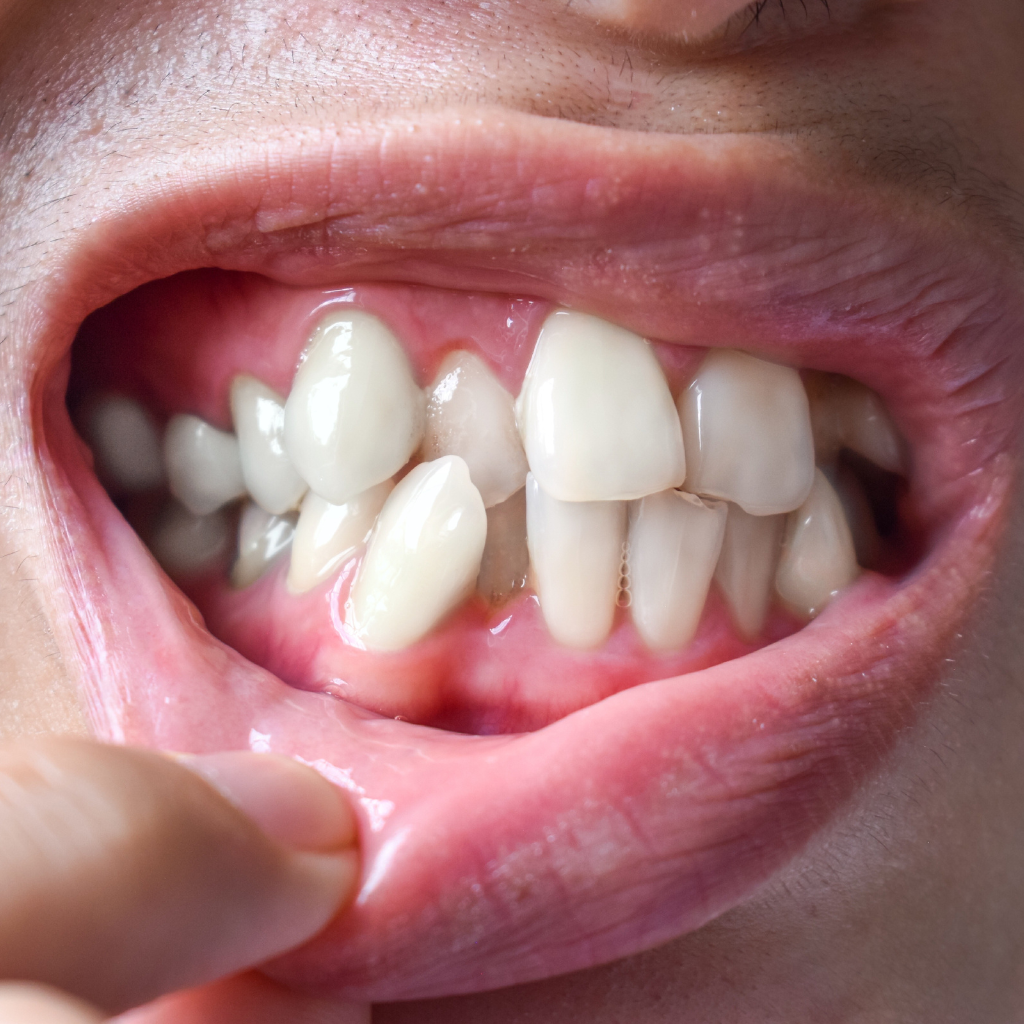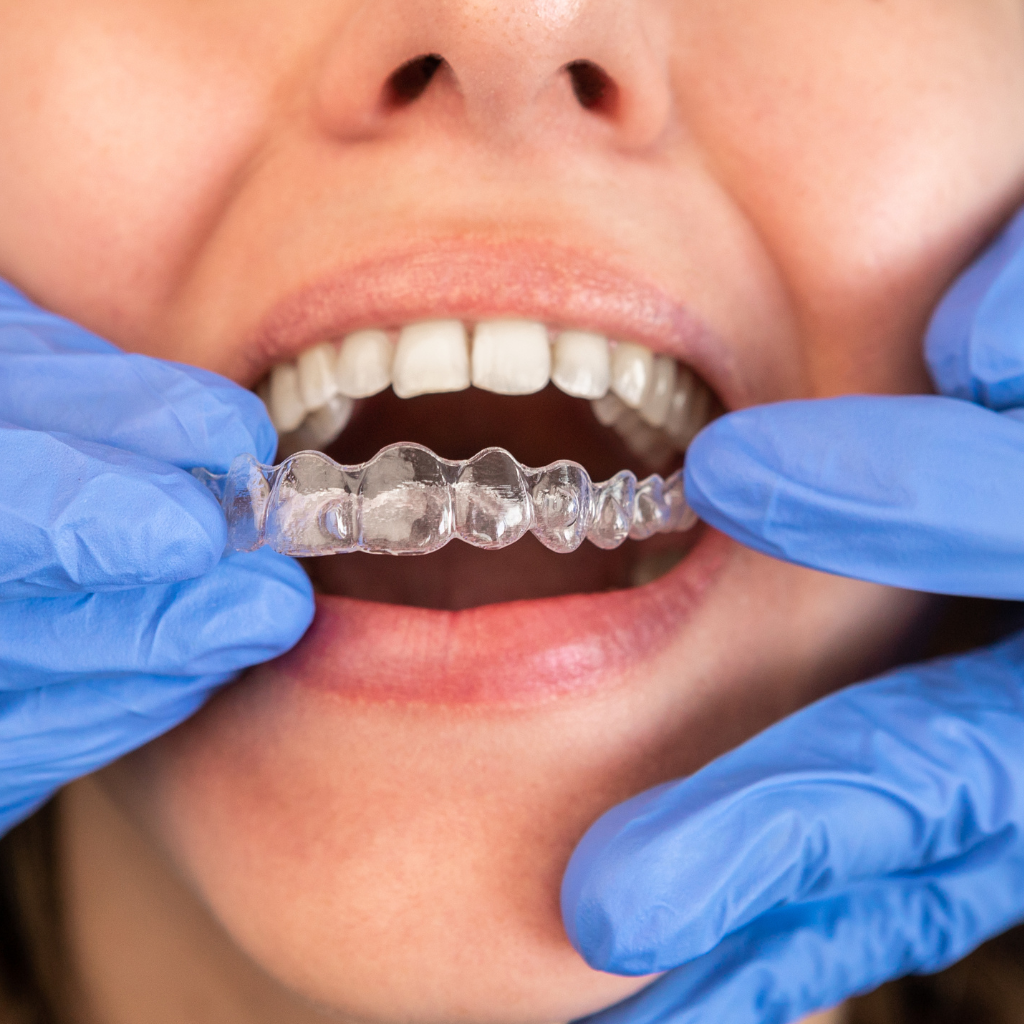Invisalign treatment duration varies, typically ranging from 6 to 18 months, influenced by the complexity of dental alignments needed. Factors such as the severity of misalignment, bite issues, and patient compliance with wearing the aligners for 20-22 hours daily greatly impact this timeframe. Regular follow-up appointments guarantee progress and adherence to the treatment plan. For more insight on how this process adapts to individual cases, further exploration into specific treatment plans and expectations could be beneficial.
Key Takeaways
- Invisalign treatment usually lasts between 6 to 18 months, depending on the specific dental requirements.
- Treatment duration is influenced by factors such as the complexity of misalignment and patient compliance.
- Regular aligner changes every few weeks are required to adjust teeth positioning gradually.
- Visible teeth alignment improvements are often noticeable within the first 3 to 6 months.
- Full treatment completion and desired results can extend up to 18 months for complex cases.
What is the Invisalign Process?
The Invisalign process begins with the use of custom-made aligners tailored to adjust the alignment of the patient’s teeth gradually.
Each treatment plan is meticulously designed based on detailed impressions or scans of the individual’s dentition, determining the specific movements required over the treatment duration.
The duration of each phase within this process is carefully calculated to optimize outcomes, ensuring effective progression towards the desired dental alignment.
How to do Invisalign Aligners Work
Invisalign aligners function by applying controlled force to specific teeth at designated intervals, guiding them into their desired positions over time.
These clear, custom-fitted Invisalign trays are designed based on advanced 3D imaging technology to guarantee they fit precisely and effectively straighten teeth.
Patients wearing Invisalign must change their aligner trays every few weeks to continue the process of moving teeth gradually. Each set of trays is slightly different, encouraging teeth to move incrementally.
For best results, patients are advised to wear their aligners for 20 to 22 hours a day, only removing them for eating, drinking, and maintaining oral hygiene.
This disciplined approach helps align teeth into their proper positions efficiently while allowing for regular cleaning to maintain oral health.
What Does the Invisalign Treatment Plan Involve
Understanding the Invisalign treatment plan begins with a thorough assessment by a dental professional who uses 3D digital scanning technology to create a precise map of the patient’s mouth.
These digital scans of your teeth are essential for customizing a series of clear aligners designed to shift teeth into the desired position gradually, raising the question of how long does Invisalign take. The orthodontist develops a treatment plan outlining the duration of Invisalign treatment, which varies depending on individual alignment needs.
Typically, patients must wear their aligners for about 22 hours a day, only removed for eating, drinking, and oral hygiene. Regular follow-up visits are scheduled to monitor progress and make adjustments to the treatment plan as needed.
Patients are encouraged to schedule a consultation today to start their journey towards a straighter smile.
How Long Does Each Phase of the Invisalign Process Take
While each patient’s situation is unique, the Invisalign process typically unfolds in several distinct phases, each varying in duration.
The initial consultation is pivotal, where dental professionals assess oral health, address any gum disease, and determine suitability for clear aligners to straighten teeth. This stage can last from one to a few weeks, depending on the complexity and the need for pre-treatment care.
Following this, the actual treatment length varies, generally ranging from 6 to 18 months. Patients receive a series of custom-made aligners, changing them approximately every two weeks.

How Long Does Invisalign Treatment Typically Last?
The duration of Invisalign treatment can vary considerably, influenced by several key factors including the severity of dental misalignments and the patient’s adherence to wearing the aligners.
Specifically, cases of crowded teeth may require a longer treatment period compared to less complex alignment issues.
Comparatively, Invisalign often promises a quicker correction time than traditional braces, contingent upon the specific orthodontic needs of the individual.
What Factors Affect Invisalign Treatment Time
Several variables can impact how long it takes for Invisalign to straighten your teeth effectively. The complexity of the problems with your teeth plays a significant role. Severe cases involving substantial misalignment or bite issues generally require longer treatment times. The initial position of your teeth also affects the duration, as more significant adjustments necessitate extended treatment. Patient compliance, including consistent wear of the aligners for the recommended 20-22 hours daily, fundamentally influences the treatment’s effectiveness and timeline.
| Factor | Description | Impact on Duration |
|---|---|---|
| Complexity of Case | Severity of dental issues and misalignment | Increases time |
| Initial Teeth Position | Starting alignment of teeth | Can increase time |
| Patient Compliance | Adherence to wearing aligners as prescribed | Directly affects time |
Understanding these factors can help set realistic expectations for the treatment time for Invisalign.
Does the Condition of Crowded Teeth Affect Duration
Given that crowded teeth represent one of the more common orthodontic issues, it is crucial to evaluate how this condition influences the duration of Invisalign treatment.
The condition of crowded teeth can greatly extend the Invisalign timeline as the severity directly impacts how long Invisalign takes to straighten teeth effectively.
The Invisalign process is designed to move teeth into the desired position incrementally. However, when teeth are densely packed, additional time may be necessary for each phase to guarantee that movements are progressive and stable.
Consequently, the duration of your Invisalign treatment may increase depending on the initial condition of your teeth and the complexity of required adjustments to achieve ideal alignment and functionality.

How Does Invisalign Compare to Traditional Braces
When considering the most efficient way to straighten your teeth, it’s essential to compare these two popular orthodontic treatments.
Here are three key points:
- Treatment Duration: Invisalign often requires less time to straighten teeth, typically ranging from 12 to 18 months, compared to traditional braces that might extend up to 24 months or more.
- Visibility: Invisalign offers a nearly invisible way to straighten your teeth without the conspicuous metal brackets associated with traditional braces.
- Comfort and Convenience: Patients using Invisalign enjoy more comfort and can remove the aligners for eating and cleaning, unlike traditional braces, which are permanently affixed during the treatment period.
Can Invisalign Aligners Help with Severe Dental Issues?
In evaluating the capability of Invisalign aligners to correct severe dental issues, it is essential to assess their effectiveness with various conditions, such as crowded teeth.
Questions also arise regarding the duration required by Invisalign to close significant gaps compared to traditional braces.
Furthermore, the suitability of Invisalign treatment across different age groups presents another important factor for consideration.
How Effective is Invisalign for Crowded Teeth
While Invisalign is widely recognized for its efficacy in treating mild to moderately crowded teeth, its ability to address severe dental issues requires careful consideration.
Here are key considerations:
- Treatment Duration: How long does it take for Invisalign to be effective in severe cases? It may take longer to correct severe crowding compared to mild cases, as the teeth move incrementally.
- Complexity of Movement: Invisalign can correct complex dental alignments, but severe cases might involve supplementary treatments alongside Invisalign aligners.
- Predictability of Results: While Invisalign is an effective solution for many, predicting how long it takes to straighten teeth entirely depends on individual alignment issues and adherence to wearing aligners as prescribed.
Does Invisalign Take Longer to Close Gaps
Building on the discussion of Invisalign’s capabilities with crowded teeth, the focus now shifts to its effectiveness in closing gaps, another common dental issue.
When considering gaps between teeth, determining whether Invisalign treatment will take longer depends on the complexity and size of the gaps. Typically, Invisalign can close gaps efficiently, but more complex cases with larger or multiple gaps might extend the timeline for Invisalign treatment.
The length of Invisalign treatment can vary greatly; for simpler gap corrections, treatment can take anywhere from 6 months. However, for more challenging scenarios, the treatment might extend beyond the average duration.
Fundamentally, the more severe the dental gaps, the longer the treatment will take.
Is Invisalign Treatment Suitable for All Ages
The Invisalign system, designed for both teens and adults, primarily targets mild to moderate dental misalignments. However, its suitability for severe cases depends on specific dental health scenarios. Here are important considerations:
- Age Appropriateness: While there is no upper age limit, young children are typically not candidates as their teeth and jaws are still developing.
- Complexity of Dental Issues: For severely misaligned teeth or complex bite issues, traditional braces might be recommended by a dentist.
- Compliance: The success of the Invisalign journey relies heavily on the patient’s commitment to wear the aligners as prescribed consistently.
Patients should consult with their dentist to determine the best process for achieving a straight smile.
What to Expect During Your Invisalign Journey?
During the virtually invisible Invisalign treatment process, patients are usually advised to wear their aligners for 20 to 22 hours each day to achieve ideal results.
Progress can usually be observed within a few weeks, dependent on the complexity of the dental adjustments required.
Post-treatment, maintaining the results involves the use of retainers, as prescribed by an orthodontic professional, to guarantee the teeth remain in their corrected positions.
How Often Should You Wear Your Aligners?
To optimize the effectiveness of Invisalign treatment, patients are generally advised to wear their aligners for at least 22 hours per day. Maintaining this regimen is essential to guarantee your Invisalign treatment is working as intended.
Here are key considerations:
- Consistency is Key: Regular wear helps gently move teeth into their desired positions according to the timeline of Invisalign.
- Flexibility for Daily Routines: Aligners should be removed only for eating, drinking anything other than water, and oral hygiene practices.
- Monitoring Progress: Frequent adherence to wearing your trays helps to straighten your smile effectively, as deviations can prolong the treatment weeks beyond the initially projected long Invisalign takes to straighten.

When Will You See the Results
Generally, the visibility of results from Invisalign can vary, but many users start noticing improvements in their teeth alignment within just a few weeks. The entire process can take as little as 3 to 6 months for minor adjustments, though more complex cases may require longer.
| Time Frame | Expected Changes |
|---|---|
| Initial Weeks | Slight movement noticeable, aligners fit snugly |
| 3-6 Months | Visible alignment improvements, closer to final teeth position |
| Post 6 Months | Completion of movement, refinement of teeth alignment |
This timeline is contingent on adherence to recommended wear 22 hours per day and regular follow-up appointments every few weeks to confirm your Invisalign is functioning effectively.
How to Maintain Results After Invisalign Treatment
Maintaining the results achieved through Invisalign treatment requires diligent post-care, which is vital for ensuring the longevity of the new dental alignment.
After investing time and effort into achieving straight teeth and a beautiful smile, it is important to follow these steps:
- Wear a Retainer: Consistently wearing a retainer as prescribed prevents teeth from shifting back significantly after the completion of Invisalign.
- Regular Dental Check-ups: Routine visits allow professionals to monitor dental health and catch potential issues early.
- Proper Oral Hygiene: Continued commitment to brushing, flossing, and using mouthwash maintains both dental health and alignment integrity.
Adhering to these guidelines will help maximize the longevity of your beautiful smile once your treatment time with Invisalign concludes.
Are There Any Risks or Side Effects with Invisalign?
While Invisalign is widely regarded as a safe and effective method for straightening teeth, potential challenges can arise during the treatment process.
Issues such as managing gum disease require careful monitoring and adherence to prescribed oral hygiene practices to prevent exacerbation.
Ensuring desired results also demands consistent wear of the aligners as directed by orthodontic professionals.
What Are the Potential Challenges in the Invisalign Process
While Invisalign offers a less visible alternative to conventional braces for individuals seeking to straighten their teeth with minimal visual impact, certain challenges can arise:
- Discomfort: Initial discomfort is common as teeth begin to move. This typically diminishes but can be bothersome.
- Dietary Adjustments: While patients can enjoy most of their favourite foods, the need to remove aligners before eating can affect compliance and potentially extend the duration of treatment.
Understanding these challenges can help manage expectations and improve outcomes.
How Can You Ensure Desired Results
Guaranteeing the desired results with Invisalign involves adhering to specific care and usage guidelines, yet potential risks and side effects should not be overlooked.
If you’re pondering Invisalign to close a small gap or align your teeth, it’s essential to understand not just how to use them but also what complications might arise. Here are key points to contemplate:
- Wear Time: Commit to wearing the aligners for the recommended 20-22 hours per day.
- Follow-Up Appointments: Regularly visit your orthodontist to ascertain adjustments are timely and effective.
- Oral Hygiene: Maintain excellent oral health to prevent issues such as cavities or gum disease, which could affect the treatment outcome.
The simple answer to finding out how long Invisalign takes is that it varies by individual needs and adherence to these practices.
Conclusion
In conclusion, Invisalign offers a technologically advanced solution for teeth alignment, typically requiring 12 to 18 months for completion, depending on the complexity of the dental issues addressed. While effective for both mild and moderate dental misalignments, extreme cases may need additional orthodontic interventions to achieve the desired results. Throughout the treatment, patients should anticipate a series of aligners and regular check-ups to guarantee progress. Importantly, while risks are minimal, potential side effects such as discomfort or slight speech alterations may occur.


